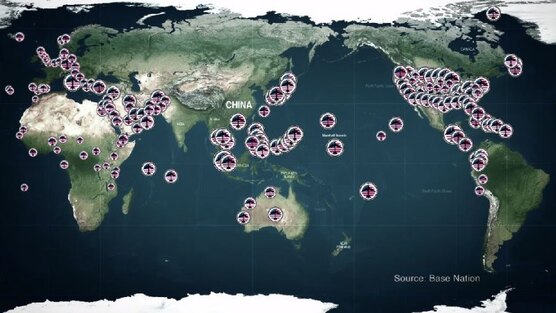
Author: Sid Ruttala
Some Context
Since the days of FDR, any Presidency or change in administration has been seen and judged on the first hundred days. Roosevelt had inherited issues ranging from a close to collapsed banking system, the Great Depression and a tumultuous time when the fabric of American society was seemingly tearing itself apart. With large segments of the population questioning the notion of capitalism and US institutions. Sounding somewhat familiar? Roosevelt moved with great speed initially, getting the Federal Deposit Insurance Scheme passed through Congress and large swathes of legislation that formed the basis of the “New Deal”. A Presidency that saw the great man give “fireside” speeches and radio broadcasts directly to the American public in order to build back trust and reiterate what had been accomplished in his first hundred days via the now unforgettable broadcast of July 11, 1933.
The Biden administration inherits the nation and the state apparatus in similarly tumultuous times. Domestically, the nation is seeing some of highest unemployment since the GFC, a divided political landscape, a crippled economy, new debt issued since the advent of Covid-19 reaching the tune of 27% of pre-crisis GDP. Foreign policy-wise an expansionist China, a Russia unbalanced by protests whose cooperation is still required for its foreign policy agenda, allies who have been left in limbo by the former Tweeter in Chief and will inevitably consider any deals inked with the current administration up for debate by the time the next one comes along.
With this in mind, we come to the present. To quote Roosevelt himself, “The more you know about the past, the better prepared you are for the future.” Like Roosevelt before him, Biden too will look to act fast. The vast array of new incentives will focus on domestic issues including boosting unemployment, infrastructure spending and tackling climate change which remains a central issue especially to those further to the left of the party. So what does this mean for Australia and the Australian investor?
US Senate Committee on The Budget Chair Bernie Sanders at the Biden inauguration
Many of the recent headlines have been dominated by the sheer scale of the proposed stimulus bill (to the tune of US $1.9tn), something that has already seen substantial pushback from the Republicans. Many have consistently said that, given the fact that the current $300 weekly unemployment benefit expires in Mid-March, for the sake of expediency and given the lack of Republican support we might see a much watered-down version of the same being passed. This is because in order for any legislation to be filibuster proof in the Senate, the numbers required are around 60 votes and not the usual 51 majority. For those of you unaware of what this means, the simplest explanation is that there is no time-limit on how long a senator can spend on speaking on an issue (any issue, a Senator could read fairy tales if he/she chose). If a cohort of the Senate wanted to block certain legislation, they could choose to speak on any topic they chose for an indefinite period of time one by one, blocking said legislation. That is, in the absence of a three-fifths majority (i.e. 60 votes) bringing the debate to a close by invoking cloture. Given the time constraints, some commentators have assumed that there will be an inevitable watering down in order for legislation to pass.I, however, would make the call that legislation in the first hundred days will be speedy and spending bills will be passed in Democrat favour irrespective of the filibuster rules. In the case of the budget, the bill will simply be put to “reconciliation” whereby a certain committee, in this instance the US Senate Committee on The Budget, can be called upon to “change spending, revenues, or deficits by specific amounts.” The committee puts together the bill with an ability to pass with 51 votes with the newly minted VP Kamala Harris breaking any tie. By the way, guess who happens to be the new Chair of the Budget Committee. None other than the internet’s favourite Senator from Vermont, Bernie Sanders. We all know how the Honourable Senator Sanders feels when it comes to budgets (and ensuring a steady supply of welfare to the American people).
\We will therefore likely see the requisite stimulus bill passed with potentially more to come. While Covid will continue to wreak havoc on large parts of the economy, the stimulus we expect should feed through into underlying Aggregate Demand and Expenditure within Q4 this year (given the lag time). With vaccine rollout underway we are likely to see a resurgence of pent up demand towards the backend of this year and first half of next year (in the absence of changes to Fed policy stances).
It was interesting to us that Biden’s pick for Treasury was Janet Yellen and much has been said about her subsequent wording when it came to USD and fiscal deficits. We see her interviews as validation of our view that not only will fiscal deficits continue to be blown out, but we are likely to continue to see policy makers prop up domestic demand at the expense of the US dollar. This is a trade off. To put it bluntly, this new focus on domestic demand will likely see a weakening of the USD in the medium to long term as well as new deficit spending, effectively being underwritten by the Fed. The trade off is effectively trashing the US dollar or the US economy.
What was rather telling was the fact that Ms. Yellen has clearly indicated that a focus will be placed on nations trying to manipulate their own currencies for commercial benefit, an eerily Trumpian policy stance. This seemingly innocuous statement was taken by the market to mean a bullish scenario for the USD. What I took away though was an awareness that more QE or movement toward YCC (Yield Curve Control) is likely to be required and the focus has to be on managing the pain when it comes to the inevitable pressures on the US currency.
For the Australian investor, this isn’t necessarily a bad thing given this nation’s reliance upon commodities which, all things equal, have an inverse correlation with the USD. For the currency traders amongst you, this presents the likely scenario that there is a bull case to be made for the AUD on a relative basis. A scenario that leaves our own policy makers some breathing space when it comes to managing inflation and the RBA’s often forgotten mandate of “stability of the currency.”
Infrastructure Spending
Within the whole context of stimulus, this is one area where there actually remains bipartisan support. And for good reason. According to even most optimistic estimates, according to the Council on Foreign Relations, the US infrastructure deficit is to the tune of close to $2tn by the year 2025. Here there are two important names to remember and they are the Secretary for Transport and the Secretary for Energy. The first nominee being Pete Buttigieg and the second being Jennifer Granholm.
Here again, the priorities given by the new administration were telling. Mr. Buttigieg is, again, a rather free-spending democrat but one with a gift for developing consensus. His rather breezy confirmation hearings and speech as pertaining to the ailing transportation infrastructure were taken well across the spectrum. We are likely to see him as a further catalyst for increased spending and given infrastructure is one with quite possibly the greatest fiscal multiplier (i.e. the amount of GDP added for every dollar spent) we will see this remain a focus. Ms. Granholm, previously the Governor for Michigan, has historically prioritised labour and providing jobs to her constituents. Her appointment yet again highlights that the second priority beyond infrastructure is labour. And, by the way, Janet Yellen is not a traditional central banker even when she was at the Fed, coming from a background of labour economics.
Within the context of infrastructure spending, we see continued emphasis on labour markets and green infrastructure in particular. This is especially the case given the pick for the EPA, Michael Regan who has been a career EPA official with brief stints working for the North Carolina Department of Environmental Quality and an NGO, the Environmental Defense Fund. A marked change from the previous administration which first nominated a lifelong critic of the EPA and second a coal lobbyist. This, combined with a nomination of the stature of John Kerry to the newly minted position of Climate Envoy, rejoining the Paris Accord and an Executive Order halting work on the Keystone pipeline, tells us that the life of the shale industry might have just got a little more complex.
This is a sign that is likely to see production and capex tick lower sequentially over the long run, especially given the reluctance of finance to play within the space. A situation likely to see continued upward pressure on the price of the Black Gold. For the Australian investor, Woodside or Horizon anyone? Similarly commodities such as Copper are likely to be further catalyzed with for example, wind turbines requiring 3.6 Tonnes of copper per megawatt generated.
Foreign Policy & Asia in Particular
Perhaps the most important relationship when it comes to foreign policy under the new administration will be the evolution of the Sino-US relationship, a relationship that is likely to determine the 21st Century. But before we go any further, let me tell you a little story. The year is 2008 and Wall Street, along with the rest of the world, is in the throes of the Global Financial Crisis, it was in this time that the Bush administration is preparing for one of the most audacious plans to bail out the financial services sector through the Troubled Asset Relief Program (TARP). However, there is a hurdle. The sheer scale of the project would entail the flooding of the Treasury market and new issuance to finance it. The answer was to send the ambassador in Beijing to ask the government of the day to silently buy up the new issuance. Within the space of a month, the PBOC had bought up close to $700bn in US treasuries.
What the above scenario illustrates is a relationship of mutual reliance (however uncomfortable), the Chinese could not afford to have their largest export market or the global financial system fall over and the US could use back-channels to save face. This scenario is however rapidly changing, initially under the Obama administration with the introduction of the now infamous TPP (Trans-Pacific Partnership) which, though a free trade agreement on face value, was a step in counterbalancing an expansionist China in the region. The tensions peeking under the Trump administration with his America First policy.
Though recent rhetoric by Xi Jinping in Davos placed emphasis upon multilateral cooperation, we somehow doubt that there is appetite in Washington to normalise relations any time soon. As we wrote about in our previous articles around Trump’s ‘trade war’, the question is not about current account surpluses but leadership, in particular leadership of the new industrial revolution (industry 4.0). China’s vision to no longer rely on labour arbitrage (labour is no longer cheap in China) and move up the value chain has created a scenario where American business, which has benefitted (in terms of the bottom-line) and historically erred on the side of caution when it comes to the hawkish policy or rhetoric, has endorsed a more confrontational policy. With Wall Street having close to three lobbyists for every congressman, we have no doubt that there will push for a more confrontational approach.

